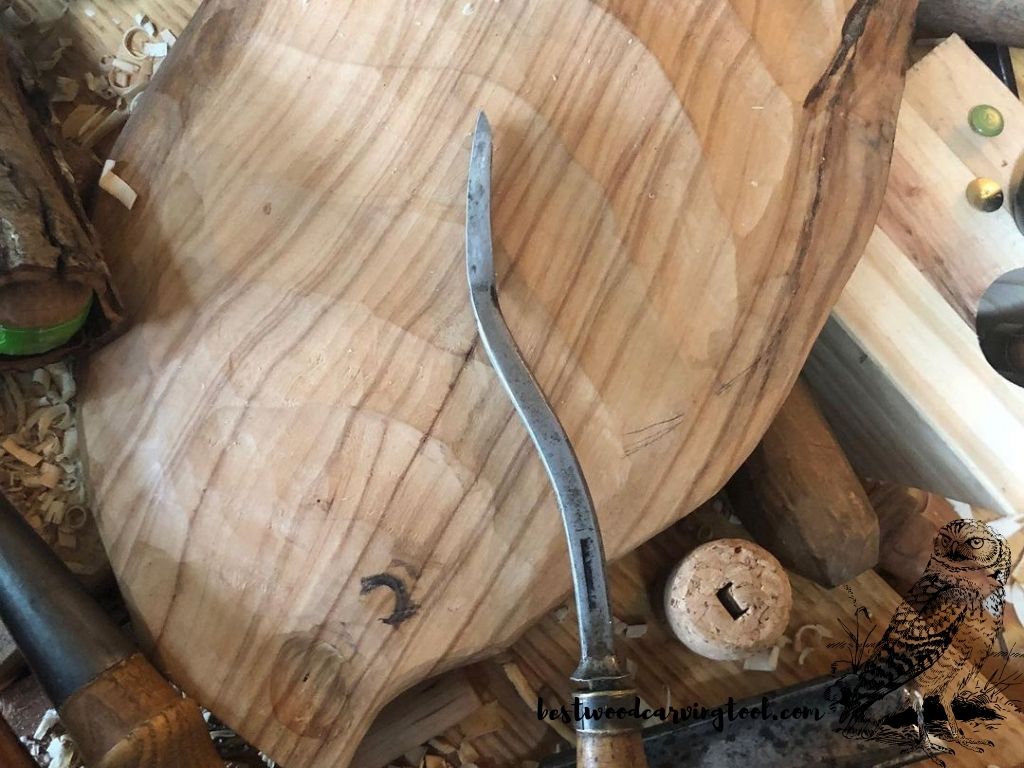

Wood Carving Chisels
Wood carving Guides 07.07.2021 Jeff Richardson 0

Even though all chisels are designed upon the same principle and can essentially perform the same type of work, there are slight differences between a classic woodworking chisel and the ones used for different carving projects.

An average wood carving craftsman has dozens of different chisels in the toolset, each with a special purpose, made to perform particular cuts. Professionals also enjoy wood carving with power tools with tips that produce the same effect as chisels, but we will cover that in another blog post.
Chisels for wood carving can be divided into two main categories: flat chisels and gouges. Gouges for carving have a rounded blade, and they are very efficient in both caricature and relief carving.
Flat Wood Carving Chisels

There are two types of flat chisels (chisels whose blade is not bent): a straight chisel and a skew chisel. Straight chisels have a bevel on both sides and they are commonly used for undercuts and removing excess wood from the surface quickly. They can be wider or very thin, to access the delicate places.
A skew chisel has a blade skewed at an angle on the cutting edge, which comes in handy especially when you are working with persistent hardwood.
Semicircular gouge

These gouges have their blades bent all the way to a semicircle, and they are created for deep, round cuts. They are quite an essential blade type for nearly all types of carving projects: sculpture carving, relief carving, whittling. They also vary in size and can be long and short, but also with a bigger or smaller radius. You should probably have a couple of different ones at hand and use the ones you need for each project.
U gouge

Curved U-gouge is very common and its blade is bent slightly on each side. They can be used for bowl carving projects, Kuksa, deep cuts, and removing the surface in a smooth round shape. They are also a nice addition when it comes to roughing the final outcome at the project finish line.
V gouge

A V-gouge is also a tool that is frequently used in wood carving projects. It has a very specific rectangular shape, used for “parting” – cut the project out of the main woodblock – among other things. It comes in handy in relief carving but also whittling. It can be out of great use for carving our fine shapes such as letters, symbols, and carving an outline of a two-dimensional project.
Special chisels
Dog-let chisel Fishtail gouge Macaroni tool Micro chisels Spoon gouge
The type of chisel that is very similar to a basic woodworking one would be a fishtail gouge, with a wide blade sharp along the edge, and slightly curved to remove wood in tight round layers.
Among small chisels used for delicate carving, we have the dog-let chisel, a small blade with two sharp edges, created to carve hard-core projects with many tight spaces. Because of its size, you can use this tool for extremely difficult cuts that are hard to reach with any other tool.
Spoon gouge and the back bent spoon gouge have a very particular shape, and they are sometimes the best choice for awkward cuts you need to make. Because of the way they are bent, concave on one, and convex on the other side, you don’t need to bend the blade too much to achieve the desired cut. These tools are not very popular, but they will make your life easier in every artsy project you wish to try out.
Micro chisels are another type of chisels that we don’t see very often. They are very thin and remind me of a dentist’s tool. And, precisely, these tiny chisels are used for perfecting your work once you are nearly done and you need some fine details sorted. One more tool that can be helpful in the set of chisels and carving knives is the macaroni tool. It is essentially a curved gouge, and it is used both as a parting tool and a splitter in high relief carving projects
Before using chisels or gauges, I like to prepare my surfaces just right. If I am dealing with an uneven surface, I smoothen it out with a rasp, after which I sand it real nice with a soft sandpaper.
Just as there are different kinds of chisels, there is a difference of purpose and types of woodworking clamps. I have recently written a blog post about it, you might be interested to check it out.








No comments so far.
Be first to leave comment below.